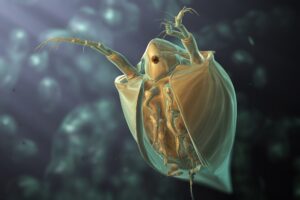Fighting a flea infestation is every homeowner’s worst nightmare. Without a host, fleas can survive up to two weeks only. So, if you have a pet, an infestation can quickly get out of hand.
Although there are many flea products on the market, most pet owners chose Frontline Plus, thanks to its arguably fast results and overwhelmingly positive reviews. However, it’s frustrating to apply a dose of the treatment on your cat or dog and call it a day, only to discover that some fleas are still alive and kicking.
So, is Frontline truly effective? And if it actually is, how long does it take it to kill fleas? Keep reading to find the answers to all these questions and more.
Short Answer
Frontline Plus should take only 18 hours to kill all fleas that come in contact with your pet’s coat. Within 48 hours, your dog or cat should be completely free of flea larvae, ticks, adult fleas, and eggs.
Through a process called translocation, during which the product flows from the pet’s oil glands and covers its body, it offers 30 days of protection.
How Does Frontline Work?
Frontline Plus utilizes a sophisticated mechanism to eliminate flea and tick infestations. Here’s a breakdown of its mechanism.
How Frontline Kills Adult Fleas
Frontline Plus is a licensed flea treatment that contains S-Methoprene and Fipronil. These two active ingredients work on compromising the nervous system of fleas and ticks. Fipronil, in particular, sends adult fleas’ nervous systems into a hyperactive state, killing them in under 30 minutes.
Frontline Plus is also considered a fat-soluble treatment, as Fipronil attaches itself to your pet’s sebaceous glands. So, your cat or dog’s body will gradually release the treatment, which ensures long protection against fleas and ticks that come in contact with the pet’s body.
Overall, the treatment’s chemicals stop fleas and ticks from irritating your pet’s skin, transferring tapeworm to it, or infecting you and your family with Lyme disease.
How Frontline Plus Eliminates Flea Eggs
As long as female fleas lay eggs, you won’t be able to end the infestation without a product that interrupts the fleas’ life cycle. Thankfully, the active ingredient, S-Methoprene, in Frontline Plus can kill flea eggs in just a few hours by acting as a growth-hindering hormone!
This insect growth regulator stops new adult fleas from harming your cat or dog and impedes the eggs laid from reaching the next developmental stage.
By using Frontline Plus on your furry friend, you’ll be able to stop flea infestations in their track and say goodbye to those pesky eggs and larvae.
Why Do I Still See Fleas After Using Frontline?
It’s not uncommon to see fleas on dogs and cats that’ve been already treated with Frontline Plus. However, you should keep in mind that flea control is much harder than it sounds. Here’s why you may be still spotting ticks or fleas on treated pets.
The Fleas Are Becoming Hyperactive
It’s normal to see fleas in a frenzy on Frontline Plus treated pets. No, your eyes aren’t deceiving you; you may be actually spotting more fleas on your cat and dog than you did before applying the flea treatment.
Nonetheless, this is expected since Fipronil makes the nervous system of any affected flea hyperactive before finally killing it. So, at this point, you should just be patient and wait for the flea product to do its magic!
Some Larvae and Eggs Are Still in the House
The fleas on your pet are just the tip of the iceberg, unfortunately. Most of the trouble comes from pupae, eggs, and larvae, and Frontline kills fleas and inhibits the life cycle of the flea eggs that only come in contact with your cat or dog’s skin.
As adult fleas can lay more than 50 eggs a day, the only way to put a stop to the infestation is to deep clean your house. Some household Frontline brand products like Frontline spray help stop fleas from jumping back onto your pet’s body.
You can also use natural oils to eliminate fleas and ticks hiding around your house. Rosemary, peppermint, and tea tree oil are all fantastic at repelling them. So, make sure to spritz some in tight corners and vacuum hard-to-reach areas.
You Haven’t Applied the Product Correctly
Frontline spot products must be used correctly to garner good results. This brand offers flea treatments for both cats and dogs. So, you need to make sure you’re choosing the right Frontline spot product for your pet.
The pet’s weight dictates the dose; this information can be found on the package. However, if you have a hard time determining the correct dosage, you can ask your vet.
To apply Frontline correctly, snap off the opening of the applicator and part your pet’s fur. Then, let the treatment drip between its shoulder blades and refrain from rubbing the product around or bathing your pet for at least 48 hours to allow the treatment to seep naturally into its sebaceous glands.
You’re Sharing Applicators
If you have more than one infected pet, you may think it’s ok to use the same applicator on them to save money. However, this can actually do more harm than good, as none of your pets will get a full dose this way. You may also end up re-infecting an already-treated pet by dumping eggs into its coat.
Your Pet Wanders Outdoors
After being treated, your pet should stop going outdoors. If your pet is a free spirit that likes to wander in your garden, it may be actually introducing new adult fleas and flea eggs to your house with you being non-the wiser.
Luckily, if you apply Frontline regularly every 8 months, it’ll kill all new fleas within 48 hours, provided that you keep your cat or dog indoors to prevent re-infestation.
Does Frontline Have Side Effects?
After being treated with Frontline Plus, most healthy pets don’t suffer from any side effects. That said, some dogs and cats can experience an allergic reaction to one or more of its ingredients. Some symptoms you should keep an eye out for after using Frontline include:
- Vomiting
- Lethargy
- Diarrhea
- Swelling and hives
- Seizures
Such allergic reactions can be life-threatening if left untreated. So, if you notice your pet exhibiting any of these symptoms, you need to consult a veterinarian immediately.
Bottom Line
As explained, you should expect Frontline to get rid of all the fleas on your pet within 48 hours. Even if you see more fleas milling around in your pet’s coat, rest assured that the product is effective, provided that it’s applied correctly.
Although most vets recommend Frontline for killing fleas and ticks, you still need to use household cleaners and vacuum well to truly put a lid on the infestation.
References:
https://uk.frontline.com/3-reasons-why-active-fleas-might-be-spotted-treated-pets
https://www.totalpetsupply.com/blog/how-long-does-frontline-plus-take-to-work/




